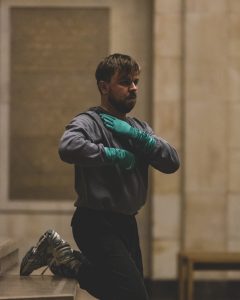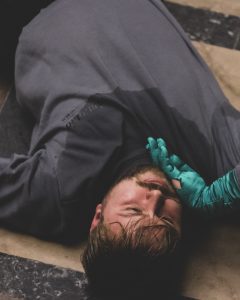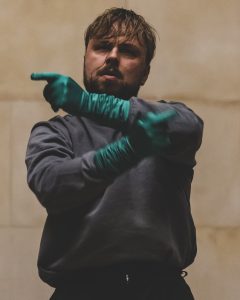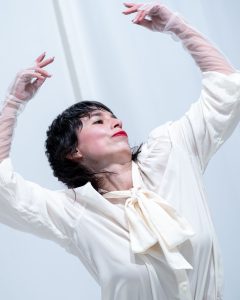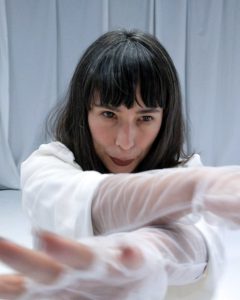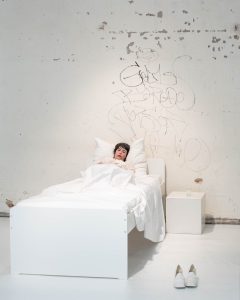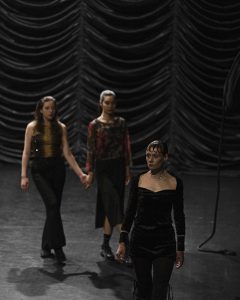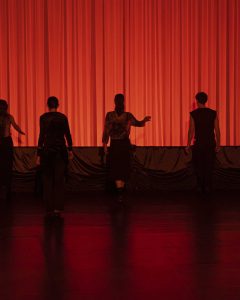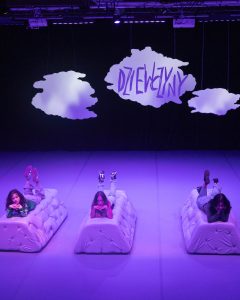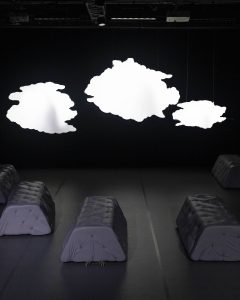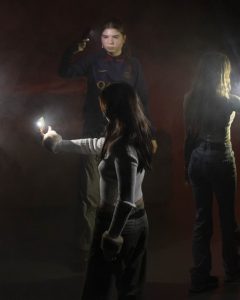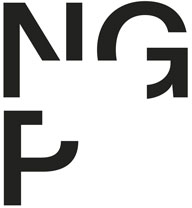Festival Norma 2023
The sixth year of the Norma Festival, titled “Past the Edge of the Fringe,” is crafted to span two dramaturgically distinct days.
The first day is dedicated to showcasing the work of Paweł Sakowicz, Poland’s renowned and internationally acclaimed choreographer and the only representative of live art in Poland to have his work featured in the National Gallery’s collection (the performance Jumpcore, which was presented at the festival in 2021).
The festival’s opening piece Fatamorgana, a cornerstone of the Studio Hrdinu repertoire is the second of the dance dramaturgy of the venue. In this choreography, Sakowicz creates a mysterious landscape, an autonomous dream world that entices the audience to fully immerse themselves in it. To follow is Amando is a minimalist solo performance of Sakowicz
The second day of the festival is dedicated to women and includes three performances and a debate.
The first performance by the up-and-coming contemporary visual artist Anna Ruth, Early Larvae, was commissioned by the festival. Through an innovative approach rooted in music and sound, Anna Ruth explores the realms of personal intimacy and invites the audience to share in her artistic vision.
Gosia Wdowik’s Dziewczyny (Girls) produced by Komuna Warszawa was cretaed within the course of seven years. Gosia, together with five other dancers, wanted to explore what it is like to be a girl today, to lose this “protective” designation, to perceive the transformation of the body over time and its value in the context of culture and, more broadly, politics.
Figuring Age, the transgenerational immersive performance-installation at the intersection of film, dance, and theater by Hungarian artist Boglárka Börcsök, is a deeply engaging experience. This performance sees Börcsök embodying the icons of Hungarian dance theater. Beyond the captivating transformation, Figuring Age delves into the recent history of Hungary, offering insight into its path towards its present-day nationalist reality.
Friday 24.11.
20.00 Fatamorgana – Studio Hrdinů ’60 minut
21.30 Amando – Korzo ’40 minut
Saturday 25.11.
17.00 Early Larvae – Studio Hrdinů
18.30 Dziewczyny – Studio Hrdinů ’60 minut – in Polish with Czech and English subtitles
20.30 FIGURING AGE – Korzo ’60 minut – in English
Studio Hrdinů, Paweł Sakowicz: Fatamorgana
choreography: Paweł Sakowicz
dramaturgical collaboration: Jan Horák
scene: Valentýna Janů
costumes: Paweł Sakowicz
music: Agnė Matulevičiūtė
lighting design: Václav Hruška
photo by: Iryna Drahun
cast: Lukáš Adam, Sára Arnstein, Jan Bárta, Adéla Gajdošová, Karolína Růžičková, Natálie Řehořová
It all starts when a group of six people meet in an undefined space and simultaneously say the same phrase: Luckily, we are going in the same direction. From that moment on, they start walking towards the back, looking at the ever-changing landscape, like a multiplied figure from a romantic painting. Over countless nights and days, they merge with the space and become the paysage themselves.
Fatamorgana – choreographed by Paweł Sakowicz – is a dance piece focusing on covering and uncovering the (romantic) landscape. The intricate light, space and sound design explore the concept of night as a mystery that makes ordinary things, sounds and bodies seem different and eerie. The group of wanderers move cautiously: sometimes in extreme slow motion, other times trembling with the excitement of the unknown.
Paweł Sakowicz: Amando
In Amando, Paweł Sakowicz uses pantomime, which conveys the content of the performance through gesture: a skilful mime lifts an invisible cup so that one has the impression that it is actually in his hand. Sakowicz builds and dissolves the meaning of gesture in his choreography, alternately stylising the dance and stripping it of style. He makes use of postmodern dance, which, although it says “no” to style and magic, at the same time defines lifting the same cup as dancing. The sound designed by Justyna Stasiowska suggests that raising the cup is different in the morning, in the evening, and still different when nobody is watching.
In 2022, National Museum in Warsaw comissioned a new dance performance from Paweł: a solo work Amando premiered in April.
Choreography: Paweł Sakowicz
Sound design: Justyna Stasiowska
Production: National Museum in Warsaw
Partner: Komuna Warszawa
Premiere: 23 April 2022
Anna Ruth and Denis Baštuga: Early Larvae
The performance “Early Larvae” by Anna Ruth and Denis Baštuga, which is created for the Norma festival, should touch on the “female shadow”. Legends featuring women transformed into demonic beings, such as Lamia or Medusa, can be interpreted as symbols of fear of strong female qualities and sexuality. They refer to the dark aspects of femininity that have historically been suppressed or demonized. The fear of power that a woman can represent, and thus the need to control this power, can lead to restriction and dehumanization.
Gosia Wdowik: Dziewczyny / Girls
This performance has happened once before.
According to the principle of experiment.
This performance is happening again.
In line with recycling practice.
This performance will happen again – in the future.
According to the principle of the longest suspense.
We met Stefa, Mimi, Jagoda, Wiktoria and Pola for the first time in 2016. We prepared together the play “Girls” at the Studio Theater, in which we wanted to talk about the experience of being a girl and how her body – and symbolic figure – functions in culture. The play was performed for two years, so the characters began to change during it. They grew out of the costumes and out of the scenes.
Their maturation also changed the show.
We were interested in how the passage of time can be captured and transformed into a performative form. How to tell a story in which both the climax and the punch line are still unknown? What is the experience of the passage of time? Are time and history always the same?
Given all these questions, the idea of a series of performances telling about the lives of five heroines was created. First: Girls. Then: Women. Then – maybe Grandmas.
Beyond all this, we wanted to stay together in this process of growing, maturing and aging in a changing political landscape.
Directed by: Gosia Wdowik
Script: Weronika Murek
Set and costume design: Dominika Olszowy
Video: Agata Baumgart
Video production: Bartek Zawiła
Light design: Klaudia Kasperska
Music, sound design: Sebastian Dembski
Cast: Jagoda Szymkiewicz, Milena Klimczak, Pola Pańczyk, Wiktoria Kobialka, Stefania Sural
Premiere: 13.10.2023 @Komuna Warszawa
/in Polish with Czech and English subtitles/
Boglárka Börcsök a Andreas Bolm: Figuring Age
Figuring Age portrays three elderly dancers from Budapest, aged between 90 and 101. The work consists of a durational performance and a two-channel video installation running simultaneously in separate spaces.
In 2015, choreographer and performer Boglárka Börcsök had the chance to meet several elderly dancers in Budapest. Wanting to work with some of them and knowing that their age would make it impossible to bring them back on stage, Börcsök and filmmaker Andreas Bolm decided to create a documentary called The Art of Movement. It portrays Irén Preisich, Éva E. Kovács and Ágnes Roboz, who were once part of the early development of modern dance in Hungary. During the filming, Börcsök’s role alternated between dialogue partner and dance student to stimulate the elderly dancers’ bodies and memories. The physical engagement continued during the editing process. Bolm and Börcsök watched the footage again and again to study the gestures, movements, and personal stories of Irén, Éva and Ágnes. Börcsök let the ladies invade her like ghosts and began to perform them.
The aging body does not contain only one body. Rather, it is multiple bodies layered in time and decay, in memories and experiences.
Figuring Age interweaves the stories and memories of the elderly dancers with their everyday gestures, postures and dance movements, tracing how the three women changed their lives and movement practices to survive the sociopolitical shifts of the 20th century.
Börcsöks embodiment of Irén, Éva, and Ágnes is a continuous work of transforming and becoming – a Vertigo. The slowness and fragile heaviness of the old bodies demand a different economy of attention, giving visitors space to rethink and negotiate their relationship to aging and death.
In a separate room, the two-channel video installation reveals Irén, Éva, and Ágnes in their private homes. The stillness of their rooms, filled with personal objects and memories, becomes the scenographic backdrop for their dynamic performances on screen.
CREDITS
Concept, choreography & production: Boglárka Börcsök & Andreas Bolm
Elderly dancers: Éva E. Kovács, Irén Preisich, Ágnes Roboz
Performance: Boglárka Börcsök
Light & sound: Andreas Bolm
Costume & scenography: Boglárka Börcsök & Andreas Bolm
Production assistant: Martyna Bezrąk
English translation: David Robert Evans
Performance produced by: Boglárka Börcsök & Andreas Bolm
Performance supported by: Die Irritierte Stadt Festival of Arts, Montag Modus
Collegium Hungaricum Berlin, PACT Zollverein Atelier No.63 – Experimental Platform for the Arts, Hellerau – Europäisches Zentrum der Künste – Residency Program, Neustart Kultur – an initiative for the Federal Commissioner for Culture and Media as part of the support program DIS- TANZEN, an Umbrella Association for dance in Germany.
Part of the work was developed in the frame of the performance exhibition “20 Dancers for the XX Century” by Boris Charmatz/Terrain.
Video credits: Andreas Bolm & Boglárka Börcsök (editing), Lisa Rave (camera), Elisa Calosi (production manager),
Video commissioned by: Montag Modus/ MMpraxis
Video founded by: Tanzfonds Erbe – an initiative by German Federal Cultural Foundation, La Musée de la Danse, Rennes, Senatsverwaltung für Kultur und Europa, Berlin
Special thanks: the title of this work is borrowed from the Anthology: Figuring Age – Women, Bodies, Generations edited by Kathleen Woodward and hereby we would like to express our debt to all the authors of this book.
